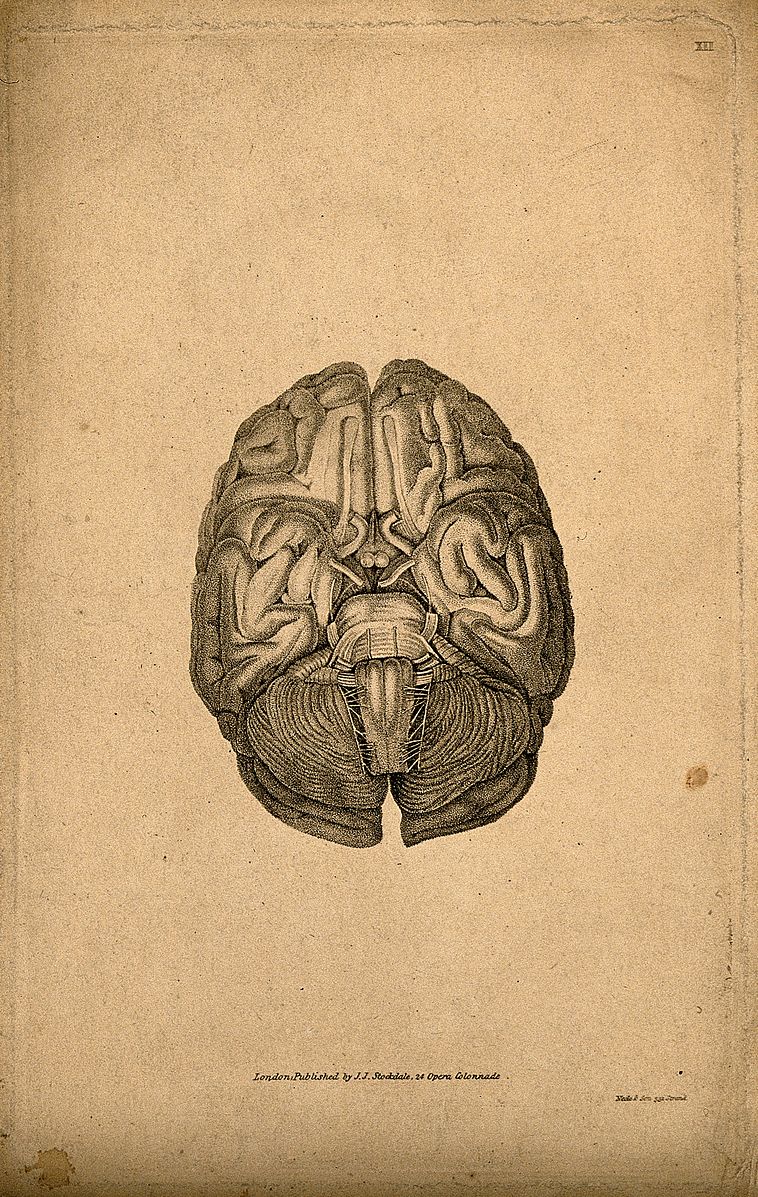 Base of the brain. Stipple engraving by Neele & Son, 1810/18
Base of the brain. Stipple engraving by Neele & Son, 1810/18
The word “nootropic” comes from the Greek for “mind” and “turning.” To turn the mind—to move it over itself, like turning over an engine, spinning the parts alive—is to look inward. Or it is at least to believe that the solution comes from within, not from those around us. What solution? The specifics don’t matter; what matters is that there is a solution—something being done—that creates the problem: not being productive or efficient enough. To solve this problem, which is less a personal problem and more a symptom of society, we might try to work with others, all those workers we’re networked to; we might try to change daily demands, not to make them easier, necessarily, but to change value from quantitative to qualitative. Or we might try nootropics, an individual, personal solution to a collective unease with the way things are.
To take a nootropic is to separate oneself from the world in order to stand out in it. To take a nootropic is to demand measurement: We measure ourselves so we can compare who we are now not with other people but with previous and future versions of ourselves. Improvement, then, via nootropics and the like, becomes a necessarily solitary pursuit, with each person using the tools of the internet—apps, trackers, &c.—to keep herself separate from the rest of the internet. To take a nootropic is to insist each of us is alone online, a place defined by connectivity. It is to insist on the self, alone and lonely, as the source of and solution to the problems of the day.
—Rachel Z. Arndt
Instruction manual
1. Feel inadequate. Feel that you’re not getting enough done. Feel that other people have pulled themselves up by their bootstraps when you’re still in your socks.
2. Choose a stack online that appeals to your dual responsibility to be productive and to be independently so.
3. Wait for the shipment to arrive, tracking it obsessively in between visits to Facebook and pings from an app that asks “What are you doing right now?”
4. Collect two days worth of work and one day to do it.
5. Set your apps to quiz you at two-hour intervals, frequent enough to collect sufficient data, infrequent enough for your productivity to thrive.
6. Take a pill. Sit down at your computer.
7. Wait for the pill to kick in, to tickle the brain into action. Feel neurotransmitter activity increasing and decreasing according to the manufacturer’s promises, because if there is no change, then what you’re doing—taking a pill—is a waste of time and effort;...
You have reached your article limit
Sign up for a digital subscription and continue reading all new issues, plus our entire archives, for just $1.50/month.
Already a subscriber? Sign in




